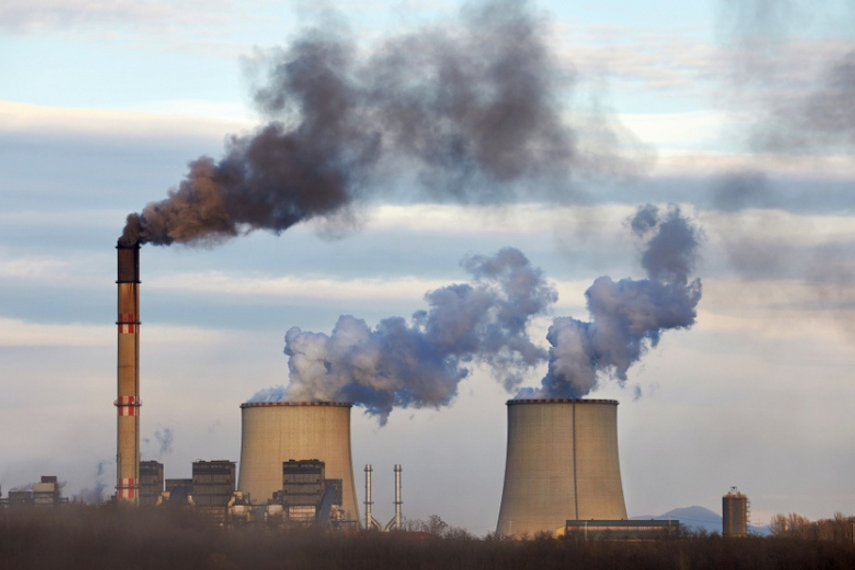
Spiralling energy prices, rising global inflation and supply-chain bottlenecks are focusing minds on the energy sector like never before. The extortionate fuel prices – going from approximately (GBP) £1.43 per litre in December 2021 in the UK to £1.88 per litre in August 2022 (according to the AA) – have generated unprecedented profits for many of the world’s biggest energy companies.
Shell reported adjusted earnings of $9.45bn in Q3 2022, more than double those of the same period last year, when the figure stood at $4.13bn. US energy giant Chevron reported $10.8bn of adjusted earnings for the third quarter, again almost double the $5.7bn achieved in the same period in 2021.
Profits have increased during a period when there has been a supply shortage. UK-headquartered Shell noted that the total production of oil and gas available for sale dropped in the past quarter to 2.77 million barrels of oil equivalent per day (BOEPD) from 3.06 million BOEPD a year ago.
The shortfall in supply, driven partly by Russia’s invasion of Ukraine and the shock caused by the Covid-19 pandemic, caused prices to surge, with one barrel costing more than $110 at certain points.
However, the current crisis in the energy sector was brewing long before war broke out in Ukraine, according to the International Energy Agency’s (IEA) latest World Energy Investment report. Much of it has been exacerbated by the sector’s limited investment in greener, renewable energy.
While investment in transitioning towards renewable energy has remained “robust”, it is “still far short of the levels that would be sufficient to meet rising demand for energy services in a sustainable way”, according to the IEA’s Net Zero by 2050 Roadmap.
With energy companies now looking at both short- and long-term solutions, ShuFen Goh, principal and co-founder of consultancy R3, says “we expect to see growth in next-generation technologies” as governments and utilities accelerate towards their “ambitious clean energy goals”.
According to the latest IEA figures, growth in clean energy investment increased by 12% between 2020 and 2021, compared with only 2% per annum historically. Advertising and marketing will therefore “play a huge part in ensuring this investment pays off”, explains Goh, adding that “consumers are eager to learn about and understand clean energy solutions and the benefits they bring to the earth.
“Energy companies can use marketing to bring their consumers along on their clean energy journey, generate awareness around their purpose-driven investment choices, and establish the intrinsic value of supporting their long-term sustainability goal.”
Asia-Pacific energy companies must direct profit to modernising infrastructure
With global inflation rising, oil and gas prices remain extremely high in Asia-Pacific, in common with the rest of the world. And the high prices mean increased profits for the few prominent and significant players in this sector.
Simon Tucker, global head of energy, utilities and resources at Infosys Consulting says it is clear the world is in a “commodities super cycle” with supply limited and huge demand.
He notes this will likely be the case for the next three to five years. “The more pressing issue for these players is innovation towards greener practices,” he explains.
Singapore-based electricity retailer Geneco is one energy company that says it will stay focused on encouraging more Singaporeans to adopt a greener lifestyle.
Geneco has previously supported Singapore’s Green Plan 2030 by launching a customisable green add-on for a residential electricity plan called Power Eco Add-on, which essentially enables customers to offset their CO2 emissions by signing up to carbon credits or a Renewable Energy Certificate for an extra (SGD) $1 a month. The scheme contributed to the One Million Trees movement by holding plant-a-tree events.
Explaining how the initiatives help customers, Alex Chan, head of marketing at Geneco, says: “On the retail front, Geneco offers fixed-price plans and a price-match guarantee for our 24-month plan. We also provide rebates, vouchers and a loyalty programme, PowerUp Rewards, so our customers can enjoy more savings, even in this climate.
“As one of Singapore’s residential electricity retailers, we commit to growing in tandem with the industry and the country’s developments. We are confident in providing value-added energy solutions that continually meet the market’s needs.”
Energy companies are investing, for the most part, but the question is whether they are investing enough to meet both existing and future fossil fuel needs. At the same time, companies also need to upgrade the global energy system to meet the demands of a lower-carbon economy.
Data from the IEA shows that investment in fossil fuels remains relatively even with clean energy in Asia-Pacific compared with North America, where one-third of investment goes towards green alternatives.
Russia is the world’s largest exporter of oil and gas and the single biggest provider of oil, gas and coal to Europe. After Russia invaded Ukraine in February 2022, European leaders met in early March and decided to reduce their dependence on Russian imports.
While in the short term this has led to a scramble for alternative sources of fossil fuels, in the long term it has accelerated the investment in renewable energy.
According to the IEA, total worldwide energy investment is expected to rise by 8% this year, reaching $2.4trn by the end of 2022. Within that, investment in clean energy is expected to exceed $1.4trn with a major boost from the power sector in renewables and grids. In Europe, suppliers’ spending on green energy is projected to hit more than $450bn.
As the energy sector evolves, the advertising climate for these brands is also shifting. In fact, it has already “changed quite dramatically in the last five years”, says Charlie Ebdy, chief strategy officer at OMD UK.
“If we cast our minds back to the pre-Covid world, the energy sector was in a period of a very aggressive price war. Regulations changed and a lot of new entrants had come in, smaller startups … had started competing very aggressively on the price of energy. Therefore, you saw the profile of investment for certain brands change over time.”
However, fast forward to the present day and some of those smaller brands have exited the market. Enstroga, Igloo and Symbio folded in September 2021 and were acquired by EON Next; British Gas acquired Bluegreen Energy, Zebra Power and Social Energy Supply in November 2021; and, most recently,
Octopus Energy announced it was acquiring Bulb, which had been placed under special administration at the end of 2021.
Ebdy explains that the remaining energy companies are, as a result, thinking more carefully about how they show customers the value of their brands.
“The combination of the fundamental disruption to the market and the huge disruption around energy supplies – as well as increasing cost – means that there is definitely a trend towards energy companies thinking about what their brand means to people and how they can better communicate what makes them valuable in this world,” he says.
Customers recognise that it is a set of global circumstances outside the control of energy companies that has caused prices to skyrocket. However, at the same time, Ebdy points out, they are “confused” about how much they are going to pay.
Highlighting the work British Gas has been doing – OMD won the media buying and planning account in August, worth $50m in billings, according to Campaign AI – he says: “This is where there needs to be leadership from brands.
“They must give people the information they need. British Gas has been doing this with its recent 'straight answers' work in the UK but it is also creating access points to get information inside people’s everyday lives.”
As 2023 fast approaches, Ebdy says what he would like to see from the energy sector is a “consistent investment from brands throughout periods of genuine struggle”.
He continues: “We saw a lot of brands do that well during Covid but, at times of real crisis, it’s really important to make sure they demonstrate leadership and continue to communicate with people clearly.”
Simon Webb, commodities and energy editor at Reuters, notes that as oil companies come under pressure to return cash to shareholders, they are investing in greener alternatives but only to replace the capacity they are losing as oil and gas fields deplete. The pressure to return money to shareholders means companies are not so concerned about increasing supply to meet future demand.
He adds that utility companies in some places are investing heavily to upgrade for the transition to renewable energy. But countries such as Germany, for example, are struggling to survive the gas price shock and are unable to offer as much to support the transition.
“Eventually, you would expect household bills to come down,” explains Webb. “Still, the IEA and others are warning that next winter (2023-2024) may be even worse than the coming winter because Europe is expected to run down gas storage to deficient levels without Russian gas. And that will make it harder to rebuild stocks ahead of the following winter.”
Significant investment in clean energy supplies, such as from wind, solar, hydro and nuclear, is imperative, according to Tucker, of Infosys. However, he points out that there also needs to be a more urgent drive to encourage businesses and consumers to use less energy.
“Reducing energy demand by 10-15% nationwide [in Europe] would make a massive difference in improving supply. As Europe looks to shore up energy supplies for winter, there needs to be a big focus on directing profits towards accelerating the modernisation of energy infrastructure,” he says.
“Far more significant investment is required in low-carbon, domestic energy alternatives, like mini nuclear reactors and community renewables, which can be deployed quickly and at low cost. We could also see investment towards cleaning up lousy industry practices like flaring [burning natural gas in a controlled manner when extracting oil], which opens up significant waste-reduction potential.”
US energy sector writes a new narrative
The US, home to some of the world’s largest fossil fuel companies, is a sector that spends billions of dollars annually on PR and marketing to clean up its controversial image.
As the climate crisis moves higher up the global agenda and governments crack down on regulation, oil and gas companies, recognising their role in polluting the environment, are steadily increasing their investments in clean energy initiatives.
In the US, clean energy investment reached $215bn in 2021, according to the IEA’s World Energy Investment report.
As fossil fuel giants aim to mitigate their impact on the climate, they are also creating a new narrative that they hope will be received more favourably by consumers. This means more investment with agencies and PR firms that can help them reshape their stories.
“Energy companies are trying to be more sensitive in the way they talk about their businesses,” says Greg Paull, co-founder and principal at R3. “You are seeing more green energy messaging coming out of the core players, who wouldn’t have been as focused on that in previous years.”
But while the energy sector is ready to invest in a new image, agencies must weigh the risks of getting involved with such clients and, potentially, greenwashing on their behalf.
A study, published in the peer-reviewed scientific journal PLOS One, found that the four major oil companies – Chevron, ExxonMobil, BP and Shell – are not taking enough action to live up to their pledges to transition to clean energy.
Using data from 2009–2020, energy companies often talked about shifting to clean energy – using terms such as "climate," "low-carbon" and "transition" – more frequently in their reports than how they were actually making significant changes that would enable them to make a company-wide transition.
The American firms in particular – Chevron and ExxonMobil – were found to "exhibit defensive attitudes" towards investing in renewable energy and moving away from fossil fuels.
At the UN General Assembly in New York in September and at COP27 in Egypt in November, PR and marketing firms were continually called out for their role in exacerbating the climate crisis by helping fossil fuel companies spread misleading claims and even tell outright lies.
Debates about whether to work with fossil fuel clients have played out publicly in the ad industry. WPP chief executive Mark Read defended his company’s involvement with the sector after climate protesters from Greenpeace stormed the group’s beachfront space at the Cannes Lions festival in June.
Following the protests, Read told Campaign: “They are right to highlight the problem of climate change and the impact of carbon on the economy. At the same time, we all have a role to play in reducing the levels of carbon and I think energy companies have to be part of the solution as much as anybody else.
“Our job at WPP is to help them talk in a fair and accurate way about the steps they are taking to move to that lower-carbon economy.”
But while agencies may have some influence, energy companies are facing bigger financial challenges and so putting green energy investment on hold. They are dealing with supply chain bottlenecks, inflation and fuel shortages, which have sent US domestic energy prices soaring.
Given the economic uncertainty, energy giants are becoming less risk averse when it comes to investing in clean energy initiatives. The cost of raw materials – such as steel, used to make solar panel racks – have shot up in the past year, acting as a deterrent to green energy investment.
This leaves the energy sector with an even trickier balance to strike as it tries to address consumers’ climate concerns in its messaging. Some brands are leaning in to purpose-driven messaging to resonate with consumers. But whether Americans buy in to these messages – while the industry continues to spend millions of dollars annually on lobbying the government for more lax regulation that both supports and encourages investment in energy companies – is still up in the air.
(This article first appeared on Campaign Asia)


.jpg&h=334&w=500&q=100&v=20250320&c=1)
.jpg&h=334&w=500&q=100&v=20250320&c=1)


.jpg&h=334&w=500&q=100&v=20250320&c=1)

.jpg&h=334&w=500&q=100&v=20250320&c=1)

.jpg&h=334&w=500&q=100&v=20250320&c=1)



.jpg&h=268&w=401&q=100&v=20250320&c=1)





